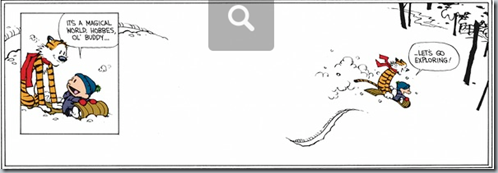Calvin and Hobbes: Lessons from the Funny Pages
This month’s Editor’s Note (Everything I Need to Know I Learned from Calvin and Hobbes) highlights some useful lessons developers can take from Bill Watterson’s beloved comic strip about a six-year-old boy and his stuffed Tiger, Hobbes. For 10 years from 1985 to 1995, Calvin and Hobbes lit up the funny pages, regaling readers with the adventures of a precocious child and his imaginary friend.
Calvin and Hobbes was never simply a punchline comic strip, like Ziggy or Garfield or Wizard of Id (which David Platt references in his March Don’t Get Me Started column), nor was it a political strip like Doonesbury or Bloom County (another personal favorite of mine). Watterson had a message to tell about materialism, conformity and the fundamental good of play, and he told it in a way that was both subtly and obviously compelling.
Yet just as a willing mind can spy faces lurking in a grilled cheese sandwich, so I found myself seeing lessons for developers in Calvin and Hobbes. My Editor’s Note column in the March issue of MSDN Magazine describes some of those lessons, many culled from Calvin’s struggles with his imaginary inventions, including the Transmogrifier and the Duplicator. Calvin’s turbulent reign as “Dictator for Life” of the club Get Rid Of Slimy girlS (G.R.O.S.S) produces useful management advice.
I am certain there are more lessons there, lurking among the high-speed wagon rides and misshapen snow goons. But the one I value most is the one Bill Watterson left us with in the final strip, on New Year’s Eve 1995. In it, Calvin and Hobbes contemplate a fresh snowfall and marvel at “a day full of possibilities.” Ultimately, Watterson leaves Calvin and Hobbes as he found them, reveling in the boundless arc of their own imaginations and discovering a world that is truly magical.
Have you discovered a valuable life or career lesson lurking in a newspaper comic strip? If so, I’d love to hear it.
